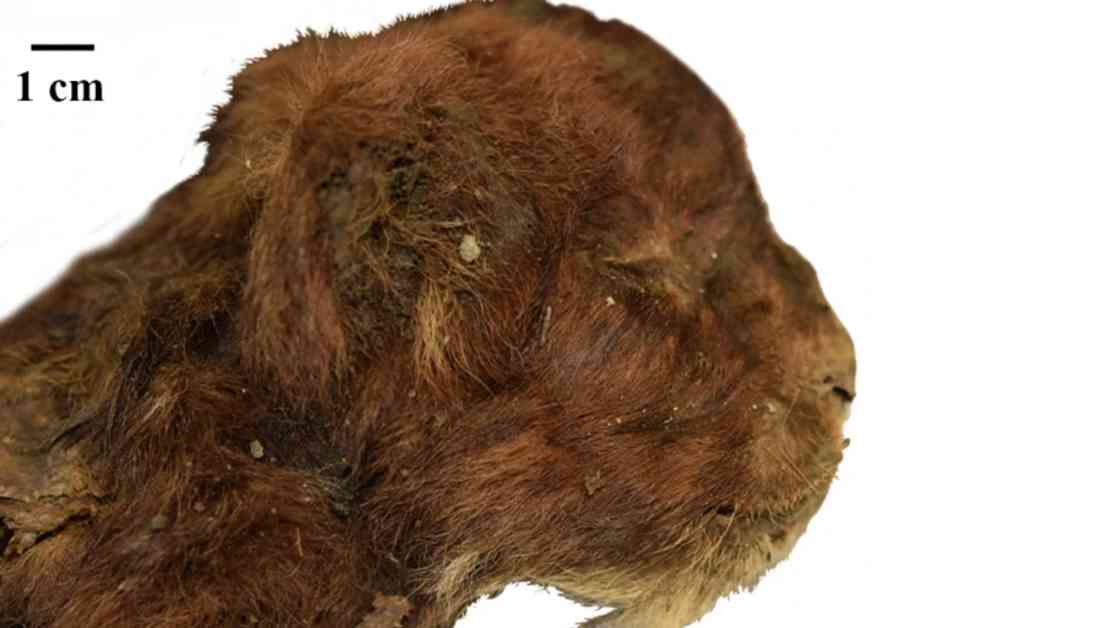The frozen remains of a sabre-toothed cat found in Russia’s Siberia region have been studied for the first time, and researchers have discovered significant differences between this prehistoric kitten and a modern lion cub of similar age. The mummified cub, estimated to be about 31,800 years old, displayed wider paws, a large mouth opening, small ears, and a massive neck region with elongated forelimbs. The neck of the sabre-toothed kitten was longer and more muscular than that of a modern lion cub, with a mouth opening about 11% to 19% larger. The absence of carpal pads on the kitten is believed to be an adaptation to low temperatures and walking in snow.
Compared to a modern lion cub, the prehistoric kitten’s ears were positioned higher on the skull, and the whole animal would have been approximately 35cm long when complete. The study identified similarities between the sabre-toothed kitten and the Homotherium genus of the Machairodontinae subfamily, known for their sharp, curved sabre teeth. The mummified body of the kitten was covered in short, thick, soft, dark brown fur, with longer fur on the back and neck compared to the legs.
The researchers noted that the sabre-toothed kitten exhibited an enlarged premaxillary bone with a row of large cone-shaped incisors, a characteristic feature of the Homotherium morphology. The findings of this study, conducted by A V Lopatin and colleagues from the Russian Academy of Sciences in Moscow, were published in the journal Scientific Reports. Frozen mummified remains of Late Pleistocene mammals are rare, and this discovery provides valuable insights into an extinct mammal that has no modern analogues in the fauna. This research sheds light on the unique adaptations and physical characteristics of prehistoric creatures, expanding our understanding of ancient animal species and their environments.










